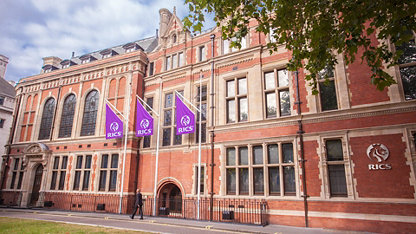Flames engulfing the historic clock of the Bank Buildings in Belfast created an image that dominated media focus. Facing the severe damage and potential loss of an iconic landmark in the city, a shift in public sentiment for greater appreciation of built heritage give rise to the need for better preservation of historic assets.
Built heritage has become more widely recognised in enhancing the character of a city, making it an attractive place to live, work and visit. However, as cities grow, and attract greater numbers of people living and working within its fabric, they may face pressure in terms of available inner-city space and service provisions. Belfast City Councils 'Belfast Agenda' plan has set a target to achieve 66,000 people living in the city centre by 2035, requiring the provision of over 30,000 new homes. This significant increase in city population will face challenges, including transport upgrades, available housing and particularly the capacity of the water network. NI Water recently announced that the growth of Belfast City will struggle unless £1bn investment in strategic drainage, under the Living with Water Programme, is supported. This presents a risk of city projects being unviable because necessary infrastructure is not in place.
Of course, such issues are not limited to Belfast, and present competing challenges across global cities in terms of how they can be resilient and maintain their unique and historic character, while providing for a growing population. The current thinking revolves around phrases like 'smart cities' and 'cities of the future'. Essentially, a smart city uses digital technology to promote performance and wellbeing and to increase its ability to respond to both citywide and global challenges such as climate change.
Read our sustainability content
The reality is that digital technology and tools are already changing the way we plan, build, maintain and use both new and existing buildings for the better, and this process needs to accelerate. PropTech, including the use of Building Information Modelling (BIM) have the power to design and develop creative projects that are more sustainable, cheaper to run and serve their purpose better. Although more greatly associated with new builds, BIM is a valuable tool in the conservation of historic buildings, not only in capturing the building fabric, but through the opportunity to explore various interventions and operational management. Coupled with global measurement standards, a city's property assets can measure in a consistent way, to create a more transparent marketplace, gaining greater public trust, investor confidence and strengthening the city's offer.
Critical to cities marketing themselves as attractive to the investment community is infrastructure. To make a smart city happen, a significant amount of investment in infrastructure is needed, both from the public sector and the private sector. Governments need to play a leading role in this, championing internationals standards which provide the tools to approximately assess the optimum cost and drive more whole life-cycle sustainable infrastructure.
In Belfast, we know that there is work ongoing involving Belfast City Council to help the city become a 'smart city'. The Smart Belfast framework, for instance, is harnessing new technologies and data science in ways that support local economic growth while also contributing outcomes for people. For example, given its historical and cultural significance, Belfast City Hall was one of seven European buildings chosen to be part of the EU's ILLUMINATE pilot project which led to the installation of a revolutionary new lighting system and a reduction in energy costs and CO2 emissions.
Built heritage not only requires a place in a smart city but is fundamental to the collective success of that city in providing places where people feel safe, where health and wellbeing are enhanced, and where they feel connected to the city's character. It is everyone's responsibility to make sure that we capitalise on the opportunity that technology provides for the built environment, both historic and new, and that we make the necessary changes to deal with climate change and improve people's experiences. Built environment professionals need to enhance their skills, clients need to demand best practice, and government needs to champion standards as a tool in supporting the process of change.
About the author

Dr Patrice Cairns
Policy Manager, Northern Ireland, RICS
Dr Cairns is a policy manager within the RICS UK Government Relations team. In addition to developing UK policy and promoting RICS thought leadership, Dr Cairns is responsible for leading RICS public policy work in Northern Ireland across all priority issues and key sectors. She works to build RICS' influence, credibility and profile.




















